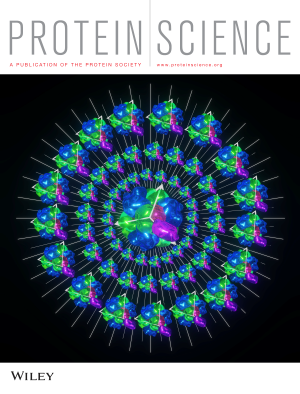
Editors: Ingemar André,1 Aitziber L. Cortajarena2,3
1 Department of Biochemistry and Structural Biology, Lund University, Lund, Sweden
2 Center for Cooperative Research in Biomaterials (CIC biomaGUNE), Basque Research and Technology Alliance (BRTA), Parque Tecnológico de San Sebastian Paseo Miramón 194, 20014 Donostia-San Sebastian, Spain.
3 Ikerbasque, Basque Foundation for Science, 48009 Bilbao, Spain.
Email addresses: [email protected]; [email protected]
As guest editors of this virtual issue of Protein Science, we are pleased to share this collection of articles spotlighting recent research in the exciting field of protein design.
The ability to design proteins with novel functions and structures has profound implications not only for fundamental protein and biochemical research but also for applied research in biotechnology and biomedicine. Progresses in protein design enable the generation of molecules with tailored structural and functional properties, resulting in proteins that can perform complex tasks with high specificity and efficiency, thus opening new avenues in numerous scientific and industrial fields. Among others, engineered proteins can serve as highly specific catalysts in industrial processes, therapeutic agents with improved efficacy and reduced side effects, and robust biomaterials for various applications.
The field of protein design has witnessed remarkable advancements in recent years, driven by both experimental and computational breakthroughs, including the emergence of artificial intelligence (AI) approaches. Advances in computational power and algorithms have allowed for more accurate predictions of protein structures and functions. High-throughput experimental techniques have enabled the rapid screening of large libraries of designed proteins, accelerating the discovery and optimization of new protein functions. The integration of computational and experimental approaches has led to the successful design of proteins and protein-based assemblies with unprecedented capabilities.
A particular mention is needed for the emergence of artificial intelligence and machine learning, which have revolutionized the field of protein design in the past years. Current, AI-driven approaches can predict protein structures with remarkable accuracy. Most recently, a comparable revolution emerged in protein design demonstrating that machine learning can create protein sequences that codify a defined target structure with unprecedented accuracy and speed, surpassing previous methods, and enhancing our ability to design proteins with desired properties.
This special issue covers a wide range of critical aspects and recent developments in protein design, showcasing the rich and diverse nature of this field of protein science. Machine learning enables many design tasks that would be unfeasible with traditional approaches and plays a critical role in the validation of sequences. However, traditional energy-based protein design approaches continue to be important, providing easier rationalization of results and many avenues for hypothesis-driven research. The work presented in this issue also highlights the importance of thorough experimental characterization of designed proteins and protein-based assemblies, as well as the exploration of sequence landscapes. Many design problems are still difficult to frame with machine learning tools or computational design, benefiting instead from cycles of rational design followed by experimental characterization. This is particularly true for the design of function rather than structure, where machine learning has made less progress to date.
Looking ahead, the future of protein design is bright and full of promise. Continued advancements in AI and computational methods will further improve our ability to design proteins with high precision. Advances in structural biology, including cryo-EM, time-resolved crystallography, and NMR dynamics, will help us validate and experimentally interrogate protein structures at different size scales with unprecedented resolution, and additionally unravel protein dynamics, which are critical in many cases to understanding protein function. Integrative approaches will also be essential for developing more sophisticated and functional proteins. We envision that the applications of designed proteins will continue to expand, addressing current challenges in medicine, industry, energy, environment, and sustainability. The ongoing research in this field will likely result in transformative protein-centered technologies.
We hope this special issue will not only inform but mainly inspire researchers, driving forward the exciting and rapidly evolving field of protein design.
The Editors, Ingemar André and Aitziber L. Cortajarena





